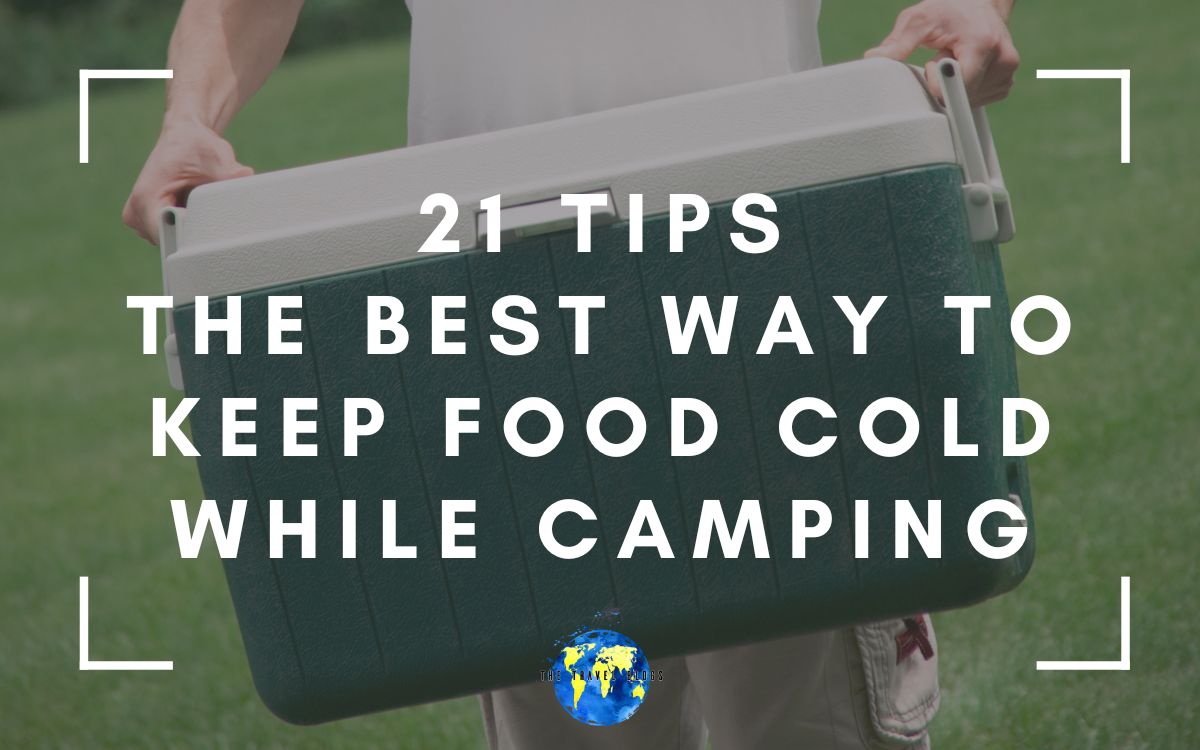Imagine staying cuddled up warm and cozy in your RV and watching the lake view. Or imagine staying up at night in your camping tent with a beautiful view of the night sky. Being away from the hustle-bustle of the city can be the most rewarding experience of a lifetime. But it’s much more exciting when you get to bring your favorite food with you.
Camping is a great opportunity to enjoy different sights while filling your tummy with good food. The great outdoors provides a unique setting for enjoying a meal, and the process of cooking and preparing food in nature can add to the overall adventure.
Camping allows you to escape the hustle and bustle of everyday life and reconnect with nature, and a delicious meal is teh perfect way to end a day of exploring the wilderness. But how do you keep food cold while camping? Is it really possible to bring your favorite food anywhere on your camping trip?
In this article, we have listed the best way to keep food cold while camping. Read this if you are planning a camping trip to escape the daily grind and connect with nature while enjoying a delicious meal. Don’t miss out on valuable insights and tips when camping – and of course, some useful products you must take with you for a wonderful camping experience.
Coming your way in this post - click to expand ->
21 tips to keep food cold when camping
Keeping food cold on your camping trip is essential for maintaining its freshness and preventing the growth of harmful bacteria. Without proper refrigeration, perishable items such as meat, dairy, and eggs can spoil quickly and cause food poisoning. Learn from these tips on how to keep food cold while camping.
1. Buy a quality cooler
Get yourself a high-quality food cooler. It is essential for keeping food cold and fresh and safe on your camping trip. A durable and well-insulated cooler will keep your food at safe temperatures, keep perishable food cold while preventing the growth of bacteria and preserving the taste and quality of your camping meals.
Look for the best cooler with good ice retention and a sturdy build that can withstand the rigors of a camping trip. It will be a great investment to store food for your camping trips, and you will be able to enjoy delicious and safe food with the right cooler.
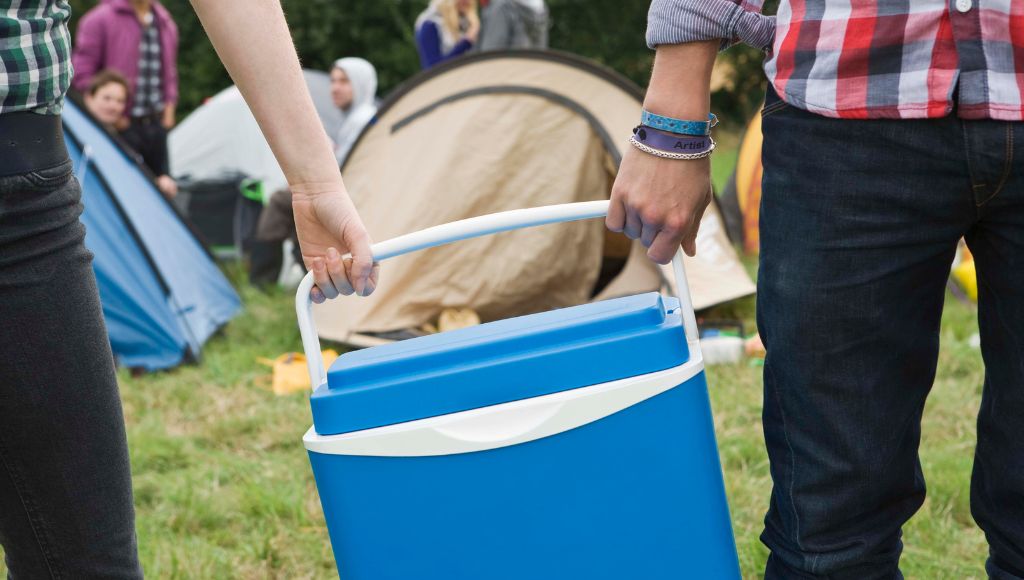
2. Consider powered coolers
Going for a tent camping? No problem! Nowadays, we have powered coolers that can make any journey to the wilderness more convenient. Below are two different ways you can use powered coolers when camping.
Powered coolers for tent camping
If you’re tent camping, the best option for you is a powered cooler. This type of cooler uses electricity to keep food cold while camping, eliminating the need for ice and providing a reliable and consistent temperature.
Powered coolers come in various sizes and designs, making them easy to transport and use while camping. With a powered cooler, you can enjoy fresh, safe food and have peace of mind during your camping trip.
RV refrigerators
RV refrigerators offer a convenient and reliable way to preserve food going off the grid for a week or more. They help ensure your food stays fresh, allowing you to enjoy your favorite food while on the go! Most RV refrigerators are designed to work on 12V DC power, making them perfect for use in an RV or other mobile setting.
They are also larger than traditional coolers, so you can store more food and keep it cold for longer. You know what’s more exciting? You can actually choose different sizes and designs to fit your specific needs, making them a great option for preserving food while camping.
3. Use a thermometer inside coolers & fridges
Using a thermometer inside your coolers and fridges when camping is a crucial step in keeping your food cold and safe. A thermometer will allow you to check the internal temperature of the food inside, ensuring that the temperature remains at a safe level which is essential for food safety.
Checking the cooler temperature is especially important for perishable items like raw meats, dairy, and eggs, as these can spoil quickly if not kept at the correct temperature. By using a thermometer, you can have peace of mind knowing that your food is safe to eat and you’re enjoying your trip.
4. Freeze or cool the food before leaving
Make sure you freeze your food before leaving for camping. It’s a great technique for short-time camping such as going to the beach, lake, or trail for a day. When food is frozen, it slows down the growth of bacteria, which can cause food to spoil. Meat, fish, and poultry needs to be refrigerated at a temperature between 32 °F to 38 °F; the freezer at 0 °F or colder.[1]
It’s important to note that once food is thawed or warmed, it should be consumed or refrigerated promptly. Additionally, when camping, it is important to keep frozen food items and leftover food in a good quality cooler with ice or frozen gel packs to maintain a safe temperature during transport and storage.
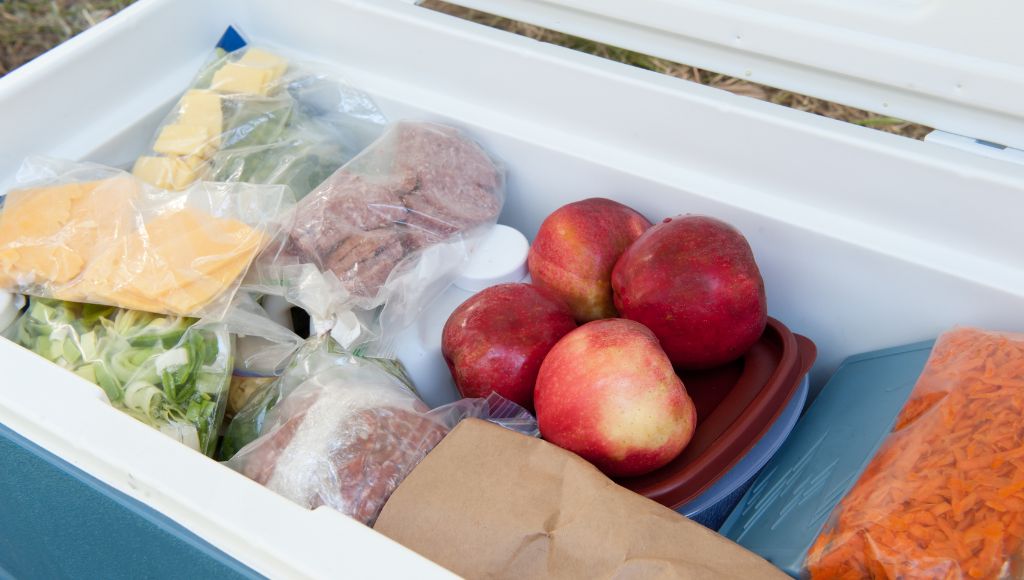
5. Freeze drinking water in containers
Freezing water bottles for camping or outdoor activities can be a convenient way to have a source of cold water on hand. To freeze water in a container, start by thoroughly cleaning the container and making sure it is completely dry. Next, fill the container with water, leaving a little bit of space at the top to allow for expansion as the water freezes.
If you plan on using frozen water bottles, it’s important to note that some plastics can crack when frozen, so it’s best to use containers specifically designed for freezing. Once the container is filled, place it in the freezer, making sure it is in an upright position.
Allow the water to freeze completely, which can take several hours to a full day, depending on the size of the container and the temperature of your freezer. Once the water is frozen, you can pack it in a cooler with other perishables to keep them cool. Keep in mind that as the ice melts, it will turn into drinking water.
6. Pick up some ice packs (or make your own)
Bringing an ice pack or making some homemade ice packs for camping is a great way to keep perishable food and drinks cold while you’re away from home. A high quality, reusable ice pack can go a long way on your journey and it is better than using ice cubes.
Ice packs help preserve food during camping by keeping food chilled at a safe temperature. As the ice packs freeze, they absorb heat, which allows them to keep the food and drinks in the cooler at a cool temperature.
Moreover, reusable ice packs can be re-frozen for future trips, so they are a more sustainable option than using disposable ice or ice blocks. It helps you save money and reduce waste. It’s important to note that using ice packs alone may not be sufficient to keep food safe, so it’s important to also practice good food hygiene and handling techniques, such as keeping raw and cooked foods separate, and washing hands and utensils regularly.
Should I use dry ice?
We may have different opinions when it comes to using dry ice. Dry ice is extremely cold, with a temperature of -109.3°, it can be used when camping. But it does have some limitations and safety precautions that you should be aware of.
First, dry ice can cause burns if touched with bare skin so ensure to wear insulated gloves. Moreover, dry ice can produce carbon dioxide, which can cause suffocation if too much is inhaled in an enclosed space. Therefore, it should be kept in a well-ventilated area and not used in a tent or other enclosed space.
Lastly, since dry ice can be extremely cold, it can damage even the best cooler. If you plan on bringing dry ice, you should have a thermo-safe cooler with you rather than an ordinary cooler.
7. Choose long-lasting ice
When camping, it’s important to choose ice that will last as long as possible to keep your food and drinks cold. If you’re camping in an RV, you can use block ice, which is denser than regular ice and can last up to several days in a cooler.
Another option is to use dry ice, which can keep things frozen for an extended period of time, but it requires careful handling and additional safety precautions. You can refer to the previous number for safety tips when using dry ice.
When using regular ice, it’s also important to consider how it was made. Clear ice is denser and lasts longer than cloudy ice, which is why it’s often used in coolers. Clear ice is also less likely to contain impurities, which can affect the taste of your food and drinks.
Another thing to consider is the size of the ice. Larger ice cubes melt slower than smaller cubes, so they will keep your cooler cold for a longer period of time. It’s also a good idea to pack the ice in a sealable plastic bag to prevent leaks and to make it easy to transport them. This will also prevent the ice from getting dirty or contaminated, which can shorten its lifespan.
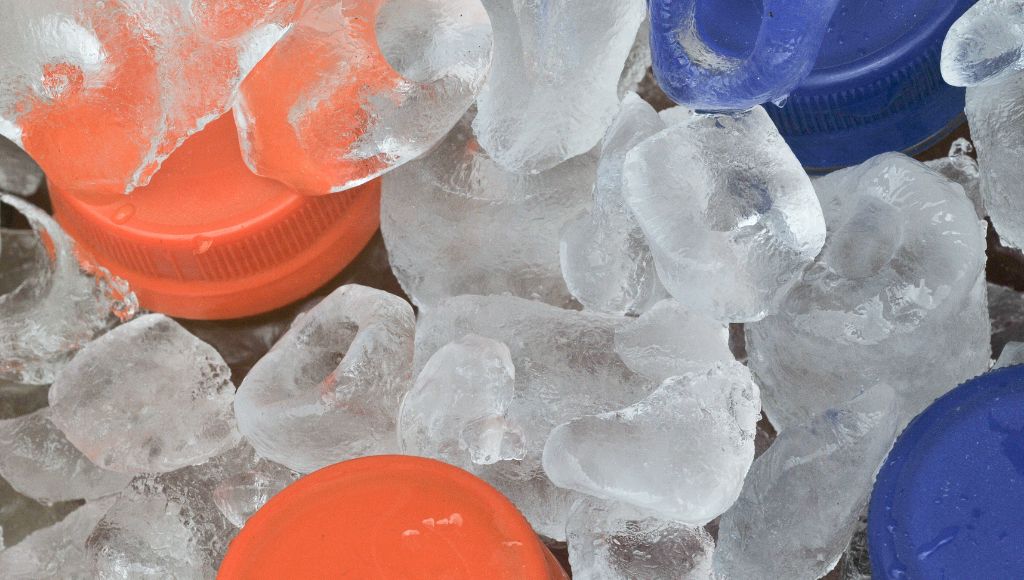
8. Pre-chill your cooler
Pre-chilling your cooler before camping is a great way to keep your food and drinks cold for longer. By pre-chilling, you’re essentially creating a “cold sink” that will help maintain a consistent cold air and cool temperature throughout your trip and help your food stay cold.
To pre-chill your cooler, place it in a cool, shaded area and fill it with dry ice packs or regular ice. Leave it to chill for at least a few hours, or even overnight if possible. This will lower the temperature inside the cooler, making it easier for it to maintain a cool temperature once you pack in your food and drinks.
9. Properly pack food into your cooler
Properly packing food into your cooler when camping is crucial for keeping it fresh and safe to eat. Here are some tips to help you pack your cooler effectively:
- Pack perishable items such as meat, dairy, and eggs on top of the ice or ice packs. This will keep them at a safe temperature and prevent them from spoiling.
- Keep raw and cooked foods separate to prevent cross-contamination. Remember to wash your hands after handling raw food.
- Pack food in airtight containers to reduce the amount of air in the cooler and slow down the growth of bacteria.
- Use ice packs or block ice to keep food cold while camping, and pack them in sealable plastic bags to prevent leaks.
- Place food in the cooler in the order in which you plan to use it, so that the items that need to be used first are easily accessible. Always keep delicate items at the top.
- Keep the cooler lid closed as much as possible to maintain the cool temperature.
10. Protect food from melting ice
To protect food from melting ice when camping, keep your food in airtight containers or plastic bags like ziplock freezer bags, and place them on top of the ice in your cooler. This will keep your food cool at a safe temperature and prevent them from getting soggy from melted ice.
Again, you can use another layer of ice packs, which melt slower than regular ice, to keep your food cold while camping for longer. Use the ice packs in combination with regular ice, and make sure to keep the cooler lid closed as much as possible to maintain a consistent cool temperature.
11. Pack your cooler tight and right for extra chilling
Start by pre-chilling your cooler and the camping food and drinks you’re going to bring. Pack your cooler tightly with ice packs, block ice or frozen water bottles, and place the most perishable items such as meat, dairy, and eggs on top.
Keep the raw and cooked foods separate, and use airtight containers or plastic bags to reduce the amount of air in the cooler. Pack the cooler in the order you plan to use the items and keep the lid closed as much as possible to maintain the cool temperature.
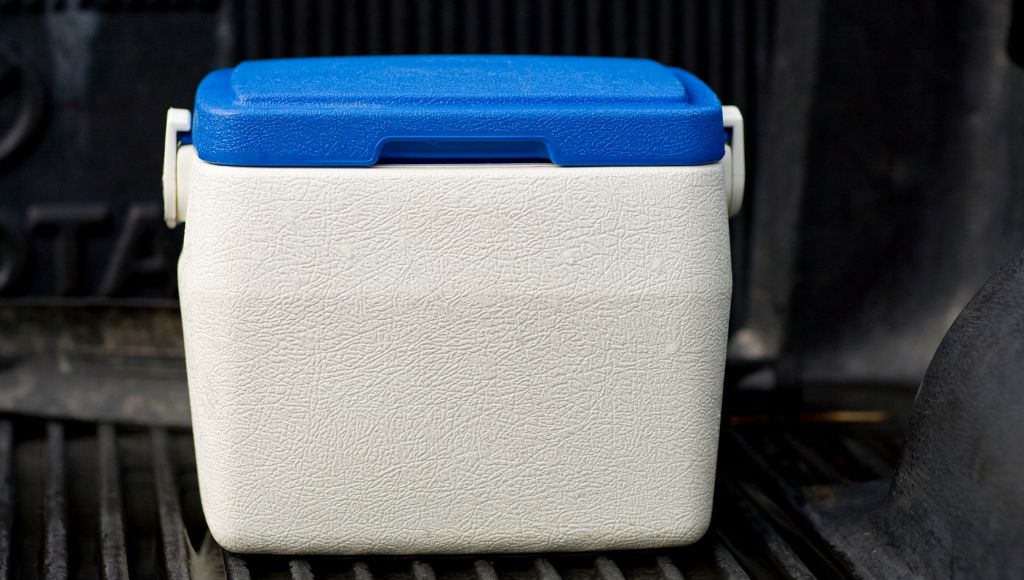
12. Utilize Multiple Coolers
Segregate your camping food supply accordingly using multiple coolers. It will help keep your food and drinks at a safe temperature for longer. For instance, you can keep your meat and poultry products in a separate cooler, and your cold drinks in a separate drinks cooler.
This will also prevent the melted ice from contaminating your drinks. Additionally, having two coolers or more can be helpful in case one cooler gets too warm, you still have the other coolers to rely on to keep your food cold longer.
13. Use evaporative cooling for produce
An evaporative cooling is useful for camping in hot and dry climates, as it helps to keep produce hydrated and cool. You can use evaporative cooling for fruits and vegetables to keep them fresh for longer. This method utilizes the cooling properties of evaporation to keep produce at a lower temperature.
To use evaporative cooling, pack produce in a breathable container such as a mesh or perforated plastic bag, and place it in a cooler with a damp cloth or towel on top. The water in the cloth will evaporate, creating a cooling effect.
14. Open the cooler as little as possible to keep food cold
To keep food cold while camping, it is important to open the cooler as little as possible. Each time the cooler is opened, warm air enters and the temperature inside rises, causing the ice to melt quickly. Opening your cooler frequently can cause food to spoil and increase the risk of food-borne illnesses, so keep your cooler closed when not in use.
To minimize the number of times the cooler is opened, plan ahead and pack enough food and drinks for the entire trip. Have a specific plan for camping meals and snacks, and only open the cooler when necessary. Keep the cooler in a shaded area and cover it with a blanket or towel to insulate it and maintain a consistent cool temperature.
It also helps to keep a high-quality camping table near your freezer, so food transfer is quick and easy.
15. Add extra insulation to camping coolers
Adding extra insulation to camping coolers can help keep food and drinks cold for longer. You can use a camping cooler pad, which is made of insulating material and can be placed under the cooler to keep it off the ground and prevent heat from being absorbed and for better insulation.
Alternative options are to use a camping cooler cover which can also be used to protect the cooler from UV rays and dust. You can also use a camping blanket or towel to cover the cooler and help insulate it, you can also improvise with a cheap styrofoam cooler which is budget friendly.
These methods can be used in combination with pre-chilling the cooler and packing it with ice packs or blocks of ice to keep the contents cold for an extended period of time.
16. Keep it full
Keep your coolers full as it helps keep food and drinks cold for longer. The lesser space there is inside, the lesser chance for warm air to circulate and less area for ice to melt. So, Pack the cooler tightly and in the order you plan to use the items, and keep the lid closed as much as possible to maintain the cool temperature.
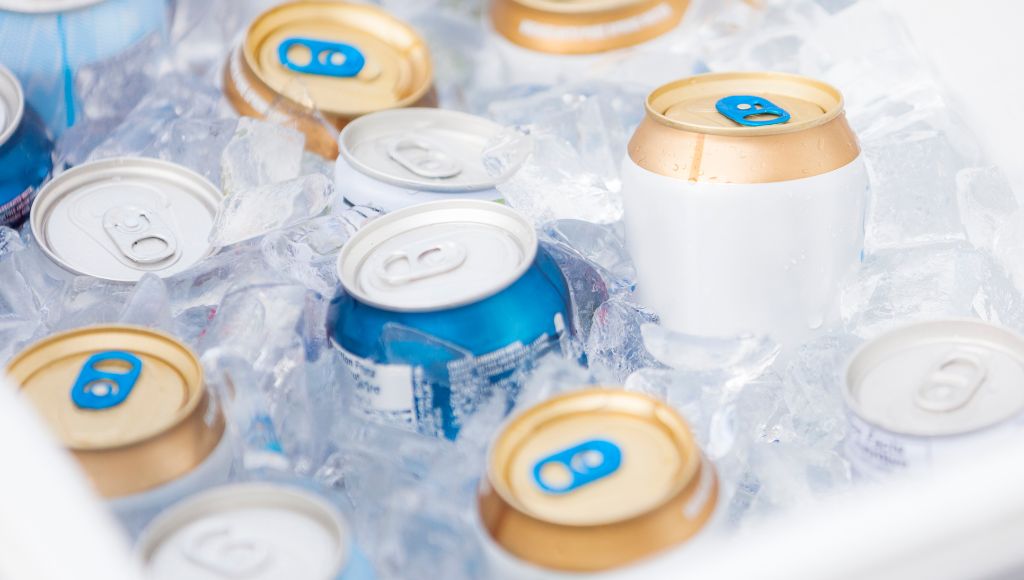
17. Cook at the campsite
Cooking at the campsite can be a great way to enjoy freshly cooked, and delicious meals while camping. A portable BBQ Grill could be ideal for RVers and campers who plan on staying in the site for a couple of days. Cooking at the campsite while having a chit-chat with family can be both fun and exciting.
So, make sure you plan meals in advance and bring along the necessary cooking equipment such as a camping stove, pots, and utensils. Don’t forget to bring along non-perishable food items such as canned goods, dried fruits and vegetables, pasta, and rice. These items can be easily packed and don’t require refrigeration.
18. Plan non-perishable food meals
Having non-perishable snacks and non-perishable foods when camping can ensure that you have a variety of food options available, even if refrigeration is not possible. They are also easy to pack and don’t require refrigeration, making them a great option for camping.
Some examples of non-perishable food items include canned goods, dried fruits and vegetables, pasta, rice, and dehydrated meals.
19. Keep your cooler out of the sun
The sun’s rays can cause the ice in the cooler to melt faster, increasing the risk of food spoilage so keep your cooler in the shade away from direct sunlight. We also recommend a camping cooler cover which you can use to protect the cooler from UV rays and dust. Don’t forget to use extra insulation such as a camping cooler pad, styrofoam coolers, or simply covering it with a blanket.
20. Know where to get more ice
Have you ever imagined where to get ice when you run out of them in the middle of your camping spree? Before going camping, research nearby locations where you can purchase ice, such as convenience stores, gas stations, or grocery stores.
Many campgrounds also offer ice for sale. It’s a good idea to bring a cooler that can hold extra ice, so you can replenish the ice as needed during your trip. Have a plan for how to get more ice in case the ice you bring along melts faster than expected.
21. Don’t drain the cooler unnecessarily
Avoid draining the cooler when not necessary especially if you use loose ice. Draining it prematurely will cause the loose ice to melt faster and your food to spoil. Each time the cooler is opened, warm air enters and the temperature inside rises, causing the ice to melt.
To minimize the number of times the cooler is opened, plan ahead and pack enough food and drinks for the entire trip. Have a specific plan for meals and snacks, and only open the cooler when necessary. In fact, it is good to keep it full and stuffed all the time.
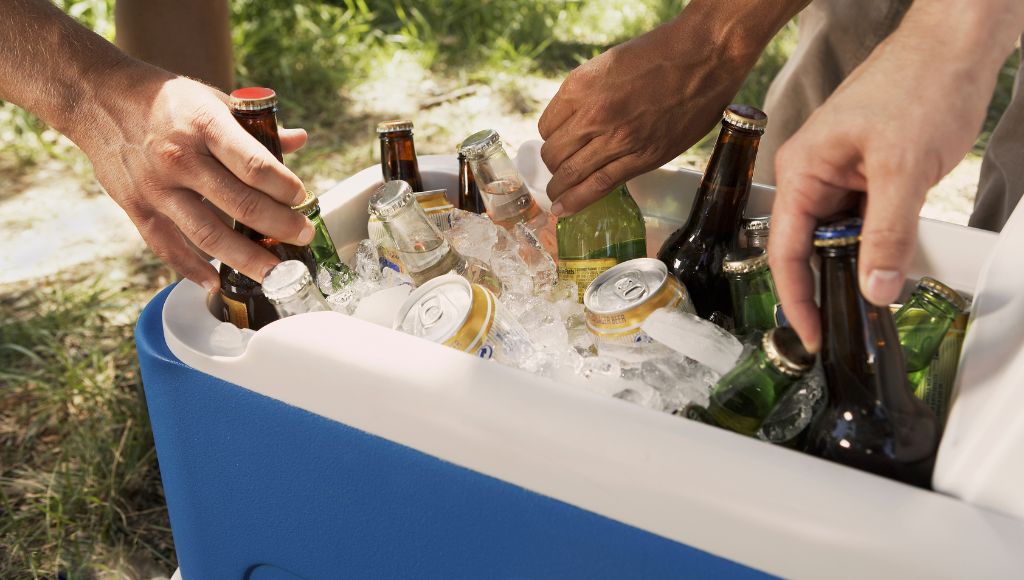
FAQs
How do you keep food cold when camping for a week?
Use a cooler filled with ice or ice packs to keep the food at a safe temperature and prevent it from spoiling. You can also use a camping fridge or portable electric cooler, which can be powered by a car or generator, to keep food and drinks cold throughout the trip.
How to keep food cold when camping without electricity?
One way to keep food cold while camping without electricity is to use a cooler filled with ice or ice packs. The ice or ice packs will keep the food at a safe temperature and prevent it from spoiling. You can also use an insulated bag with ice packs which will also help to keep food cold for a longer time.
How long will a cooler keep food cold?
The length of time a cooler will keep food cold while camping depends on several factors, including the type of cooler, the amount of ice or ice packs used, and the outside temperature. Generally, a well-insulated cooler filled with ice or ice packs can keep food cold for several days, although it’s recommended to check the temperature of the food inside the cooler to ensure its safety.
On the other hand, a cooler that is not well-insulated or not filled with enough ice or ice packs may not keep food cold for as long, and it’s recommended to consume the food within 24 hours to avoid spoilage.
How to keep food cold while backpacking?
There are many ways to keep your food cold while backpacking such as putting them inside an insulated bag or a cooler with an ice pack. In any case, you should bring pre-pack foods and canned goods for emergency purposes. Some food can become spoiled easily due to external factors from the outdoor environment.
